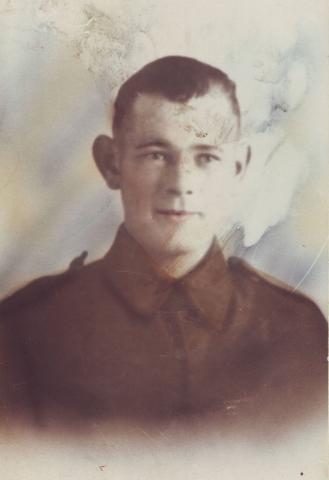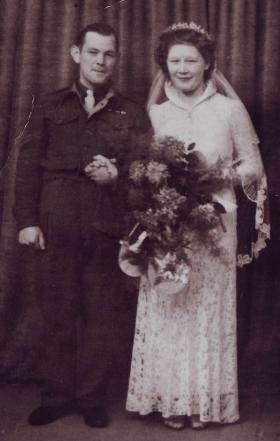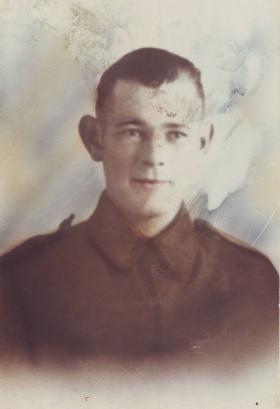James Henderson Dickson was born on 19 October 1916.
On 2 August 1938 he enlisted into the Royal Artillery, and served in France. Returning to the UK, Gunner Dickson was posted to 458 Independent Light Battery before its conversion to an Airborne Unit.
In July 1942 the unit was renamed 1st Airlanding Light Battery, and between 19 October and 7 November that year Lance Bombardier Dickson attended parachute training course number 35 at RAF Ringway.
In April 1943 Lance Bombardier Dickson returned to the rank of Gunner at his own request, and in May embarked for North Africa, arriving on 26 May 1943. Although he spent some time in hospital after arriving, Gunner Dickson saw action in Italy and was appointed Acting Lance Bombardier.
On 25 January 1944 he embarked for the UK, arriving on 10 February. Later that year, on 17 September Lance Bombardier Dickson emplaned on glider 884 for Operation Market Garden, landing near Arnhem to secure the bridge.
The Division defended the bridge and surrounding areas against constant attack, but on Monday 25 September began to withdraw from the bridge.
German Tiger Ausf B tanks were sent down towards the defences. The tanks were the prized weapons of the German 506th Panzer Battalion, although they were difficult to manoeuvre within the streets of Arnhem. One tank approached Lance Bombardier Dickson’s position, who, along with Lt Donaldson, moved a 6 Pounder Anti-Tank gun into the open and fired. After the rounds bounced off, the men used a 75mm pack Howitzer which set the tank on fire before jamming. Lance Bombardier Dickson then fetched a PIAT which he used to stop the tank. Although it was not destroyed, the combined fire disabled it, earning Lance Bombardier Dickson a Military Medal.
His citation read: This NCO of 'C' Troop, 2 Battery, accompanied Lieutenant Donaldson to a 6-pounder gun whose crew had been wiped out by a Tiger tank during an attack on C Troop's position. He laid the gun under heavy Machine Gun fire and fired eight or nine aimed rounds at the tank before the gun was destroyed by a direct hit. He then picked up Lieutenant Donaldson who had been stunned and carried him under cover and after a few minutes accompanied Lieutenant Donaldson to No 1 Gun of C Troop which was still in position although the crew had all been killed.
This gun was under heavy Machine Gun and small arms fire, but nevertheless, acting as layer he fired four aimed rounds at the tank before all armour piercing shots was expended. He was then ordered to destroy the gun by Lieutenant Donaldson. This he refused to do and continued to fire high explosive at the tank whilst Lieutenant Donaldson went in search of more armour piercing shot. When this arrived he fired more shots at the tank, laying along the bore, and succeeded in breaking its tracks before his gun jammed. Lance-Bombardier Dickson then suggested that he should go and fetch a PIAT from his Troop wagon lines. This he did and together with Lieutenant Donaldson engaged the tank but without success. Throughout the whole of the action carried out under heavy Machine Gun and small arms fire, Lance-Bombardier Dickson showed devotion to duty and determination to destroy his enemy of the highest order. With kind permission from the Pegasus Archive.
On 30 January 1945 he was granted the rank of War Substantive Bombardier.
WS/Bombardier Dickson was sent with the 1st Airborne Division to Norway in June 1945 to oversee the German Surrender, returning to the UK in late August 1945.
He was posted to the Reserve in December 1945.
By Rebecca Blackburn with information supplied by Martyn Dickson
Read More






Latest Comments
There are currently no comments for this content.
Add Comment
In order to add comments you must be registered with ParaData.
If you are currently a ParaData member please login.
If you are not currently a ParaData member but wish to get involved please register.